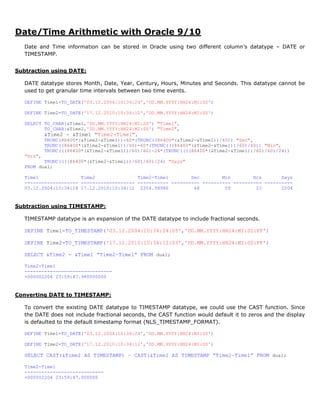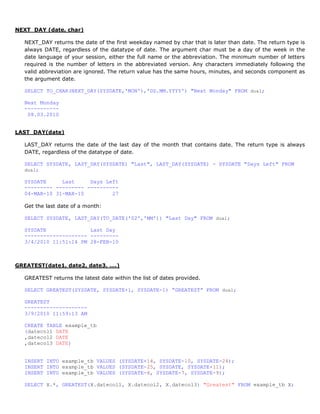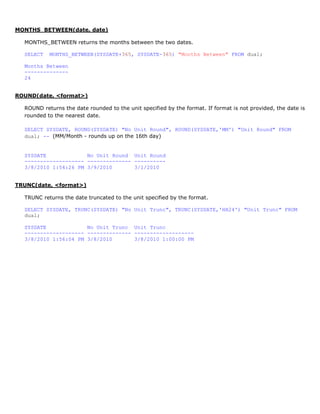This document discusses various date and time functions in Oracle including subtraction, conversion between DATE and TIMESTAMP datatypes, date arithmetic functions like NEXT_DAY, LAST_DAY, GREATEST, LEAST, ADD_MONTHS, MONTHS_BETWEEN, and formatting functions like ROUND and TRUNC. Examples are provided for each function to demonstrate how it can be used to manipulate and extract information from dates.



